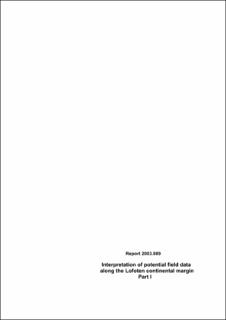| dc.description.abstract | Aeromagnetic data from the Røst Basin (RAS-03) were acquired in 2003 and compiled with neighbouring data-sets. The new Ra 3 compilation (Røst Aeromagnetics 2003 consisting of LAS-89, NAS-94, VAS-98 and RAS-3) has been reprocessed and subsequently merged with the SPT-93, NGU-69, NGU-73 and NRL-73 surveys in addition to the mainland of Norway aeromagnetic grid data. A compilation of the existing gravity data in the area has also been carried out. Forward 3D modelling along 14 profiles is constrained by available data on density, magnetic properties and reflection and refraction (OBS) seismics. The new data show that the previously interpreted oceanic fracture zones (Bivrost, Jenegga and Vesterålen) do not exist. Apparent offsets in the oceanic spreading anomalies were caused by poor navigation and wide line spacing of the vintage datasets. Consequently, opening of the Norwegian-Greenland Sea occurred along a stable axis without offsets of the oceanic spreading anomalies. A basement structure map has been compiled, and contains depth to magnetic basement, regional basement faults, and transfer zones. The Sandflesa and Flakstad basement highs at depths of approximately 6 km occur to the southwest and west of the Utrøst Ridge. The Bivrost, Vesterålen and Lenvik transfer zones define the regional segmentation of the Lofoten margin. The local Mosken and Melbu transfer zones are also located where shifts in polarity occur along faults and separate individual rotated fault blocks. The transfer zones are not spatially connected to younger oceanic fracture zones as previously interpreted. Depths to magnetic basement are locally larger than the depths obtained from gravity and seismic data (e.g. in the Helgeland and Vestfjorden basins and the Nordland Ridge). We interpret these to represent down-faulted Caledonian nappes, Devonian sediments or low-magnetic (amphibolite facies) Precambrian rocks. Voluminous mafic intrusions occur in both the basement and the overlying sediments in the Sandflesa high area and cause large gravity and magnetic anomalies. Basement depth estimates from gravity and magnetic data to the east of the Utrøst Ridge and north of the Marmæle Spur show that there may exist an approximately 2 km thick sequence of low-density sediments below the base-Cretaceous unconformity in this area. | |

